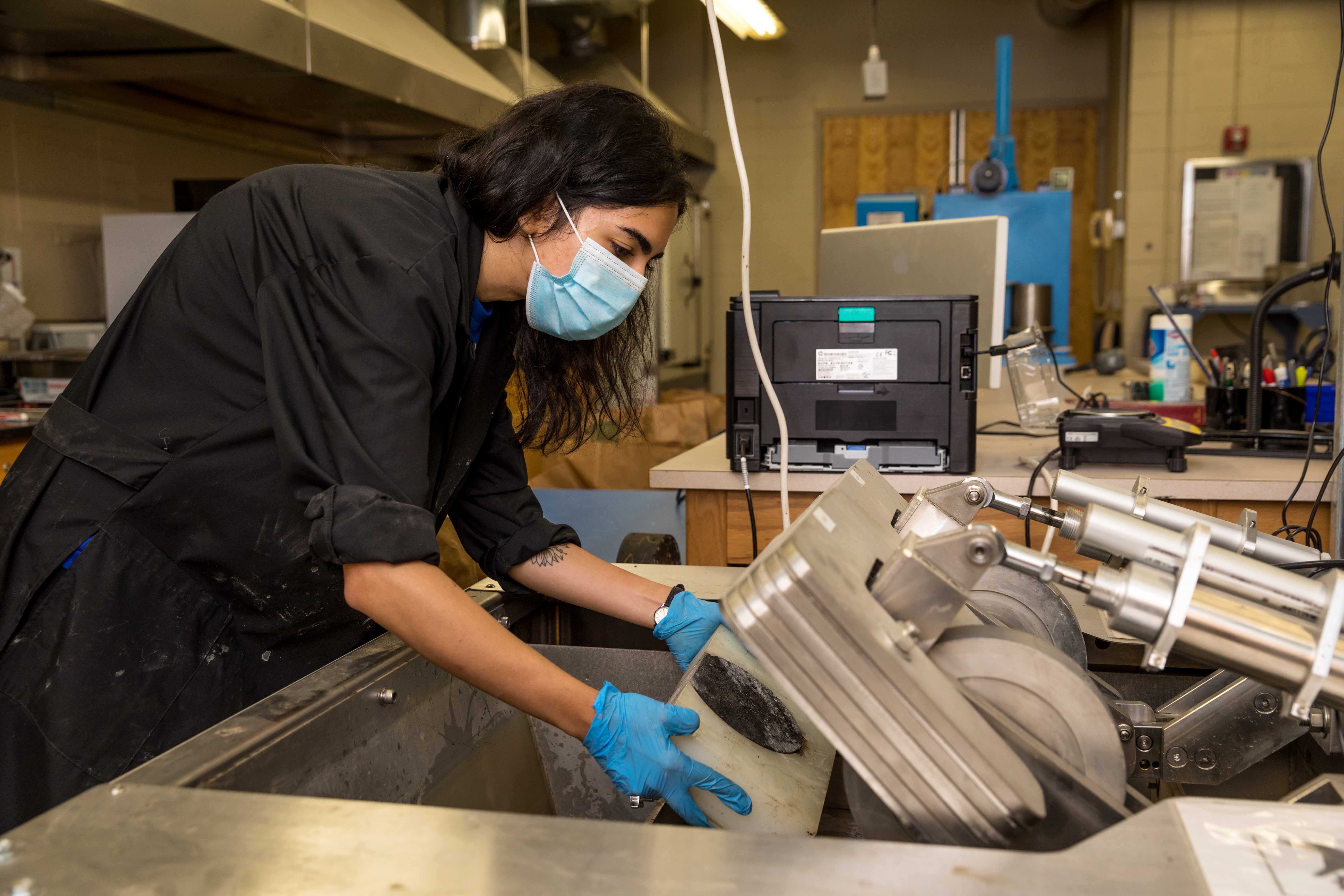That’s the idea behind a Sun Grant research project to determine whether cellulose fibers, harvested from agricultural residue and forest byproducts, can be integrated into asphalt pavement mixtures.
“This research shows the high potential of using cellulose fibers as a modifier to enhance the mechanical properties of asphalt,” said South Dakota State University assistant professor Rouzbeh Ghabchi, who led the proof-of-concept study. His research in SDSU’s Department of Civil and Environmental Engineering seeks to improve the durability of South Dakota roads.
Asphalt binder, a thick, sticky substance produced as part of crude oil processing, holds the aggregates—the sand, gravel and crushed rock—in the asphalt mixture together. Replacing a portion of the petroleum-based binder with cellulose can improve the performance of asphalt pavement, said Ghabchi, who oversees the asphalt and concrete laboratories.
Graduate student Marco Paulo Pereira Castro, who completed his master’s degree in May, also worked on the project, which was supported by a one-year grant from the North Central Regional Sun Grant Center.
“Cellulose is one of the structural elements available in agricultural materials,” Ghabchi explained. “Cellulose nanofibers are cost-effective to produce and come from a renewable, sustainable source.”
More than 80% of South Dakota’s state highways are paved using asphalt, according to the 2016-17 S.D. Department of Transportation Fact Book. “The asphalt industry has a significant scale,” Ghabchi said. “If we can engineer and produce a paving material that reduces material production and maintenance costs by as low as 1%, this will result in a substantial amount of savings for taxpayers.”
Stephen Gent, director of the North Central Regional Sun Grant Center, said, “One of our key research and development areas is transforming the resources we have in our farms and rangelands into value-added products that will build our agricultural and natural resource economy.”
Fabricating cellulose fibers
“We started with cellulose acetate and used a procedure called electrospinning to make the cellulose nanofibers,” Ghabchi explained. This portion of the project was done in collaboration with assistant mechanical engineering professor Anamika Prasad, whose research group incorporates cellulose nanofibers into structural engineering materials and biomaterials for medical applications. Mechanical engineering doctoral student Ruhit Sinha also assisted with the cellulose fiber fabrication.
To produce the fibers, the cellulose is dissolved in a solution, which is pumped through a syringe at a particular feeding rate. High voltage is applied to create an electrical field that draws the solution from the syringe tip. The solution dries as it emerges from the tip into aligned nanofibers that are deposited on a collector plate.
The researchers tested various amounts of cellulose in different solvents to get the right type of cellulose nanofibers to use in the asphalt binder. “We were able to produce cellulose nanofibers that gave us a consistent material in terms of quality and structural strength,” Ghabchi said.
Testing adhesion, performance
The researchers then modified asphalt binders with different levels of cellulose nanofibers and tested the formulations with different aggregates. “If it is not a good glue, it is not useful,” he explained. The asphalt mixture must be flexible yet strong enough to resist cracking.
One of the tests involved subjecting the asphalt mixes to freeze-thaw cycle and conditioning them in water to test their susceptibility to moisture. “Freeze-thaw, rain and snow can result in the asphalt binder stripping from the aggregates—then we get potholes,” Ghabchi said.
Finally, the researchers tested the performance of the asphalt. Ghabchi leveraged Sun Grant and Mountain Plains Consortium funding to acquire a wheel tracking device that simulates rutting and moisture-induced damage on the highway. “This test shows how well the asphalt material resists rutting and moisture-induced damage,” he said.
“We were able to compare and rank mixes with various amounts of cellulose nanofibers and different types of asphalt binders and to see the effect of the fibers on mechanical properties of asphalt mixes,” he explained. In addition, the researchers tested the asphalt specimens to failure to determine their fatigue performance.
Although further testing will be necessary, Ghabchi said the small-scale study showed that “plant-based additives are a promising technology for developing sustainable highway construction materials.”



